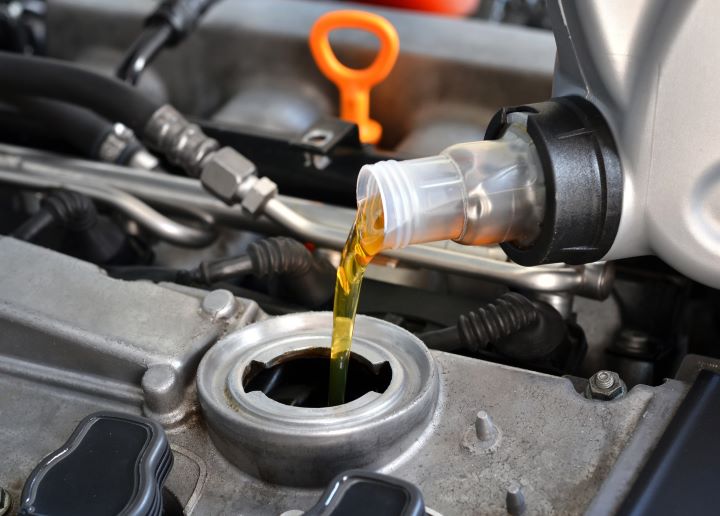Understanding Modern Oil Change Intervals: What Drivers Should Consider
For years, the 3,000-mile oil change rule was a go-to guideline for vehicle maintenance. But with recent advancements in engine design and synthetic oil technology, that standard may be due for an update. This overview explores how modern vehicles operate under different conditions and what drivers now consider when determining the right oil change schedule. Learn how maintenance habits are shifting with newer models and evolving recommendations.

What Are the Key Synthetic Oil Benefits for Modern Engines?
Synthetic oil offers superior performance compared to conventional motor oil, particularly in extreme temperatures and demanding driving conditions. These engineered lubricants maintain their viscosity better across temperature ranges, providing consistent protection whether starting a cold engine in winter or operating in high-heat summer conditions. Synthetic oils also contain fewer impurities than conventional oils, resulting in cleaner engine operation and reduced deposit formation.
The molecular structure of synthetic oil allows it to flow more easily at startup, reducing initial engine wear when components are most vulnerable. Additionally, synthetic oils typically last longer between changes, with many manufacturers approving intervals of 7,500 to 10,000 miles for vehicles using full synthetic lubricants.
How Does Proper Oil Maintenance Support Engine Wear Prevention?
Engine oil serves multiple critical functions beyond basic lubrication, acting as a coolant, cleanser, and protective barrier for internal components. Fresh oil maintains proper viscosity to create a thin film between moving parts, preventing metal-to-metal contact that causes premature wear. As oil ages, it loses these protective properties and begins accumulating contaminants that can actually increase engine wear.
Modern engines operate with tighter tolerances than older designs, making clean, high-quality oil even more crucial for longevity. Contaminated or degraded oil can lead to increased friction, higher operating temperatures, and accelerated wear of critical components like bearings, camshafts, and piston rings. Regular oil analysis can help identify potential issues before they become costly repairs.
What Factors Determine Optimal Oil Change Frequency?
Several variables influence how often you should change your vehicle’s oil, making blanket recommendations less reliable than individualized approaches. Driving conditions play a significant role, with stop-and-go traffic, frequent short trips, dusty environments, and extreme temperatures all accelerating oil degradation. Highway driving typically allows for longer intervals compared to city driving with frequent starts and stops.
Vehicle age, engine type, and manufacturer specifications provide important baseline guidance for oil change timing. Many newer vehicles have oil life monitoring systems that calculate optimal change intervals based on actual driving conditions rather than simple mileage counters. These systems consider factors like engine temperature, RPM patterns, and trip duration to provide more accurate maintenance timing.
Why Is High Mileage Maintenance Different for Older Vehicles?
Vehicles with over 75,000 miles often require specialized maintenance approaches, including different oil formulations designed for aging engines. High-mileage oils contain seal conditioners and additives that help reduce leaks and minimize oil consumption in older engines. These formulations typically have slightly higher viscosity to compensate for increased clearances between worn engine components.
Older vehicles may benefit from more frequent oil changes, particularly if they show signs of oil consumption or have developed minor leaks. However, switching to high-mileage oil formulations can often extend change intervals even in older engines while providing better protection than conventional oils.
Cost Considerations for Different Oil Change Options
Understanding the financial aspects of various oil change options helps drivers make informed maintenance decisions. Quick-lube chains typically charge between $25-45 for conventional oil changes, while full synthetic services range from $50-80 depending on location and oil capacity. Dealership service departments often charge premium prices but may offer manufacturer-approved oils and expertise specific to your vehicle.
| Service Type | Provider Example | Oil Type | Estimated Cost |
|---|---|---|---|
| Quick Lube | Valvoline Instant Oil Change | Conventional | $30-40 |
| Quick Lube | Jiffy Lube | Full Synthetic | $55-70 |
| Dealership | Honda Service Center | OEM Approved | $60-85 |
| Independent Shop | Local Mechanic | Various Options | $35-65 |
| DIY Option | Auto Parts Store | Your Choice | $25-50 |
Prices, rates, or cost estimates mentioned in this article are based on the latest available information but may change over time. Independent research is advised before making financial decisions.
Making Informed Decisions About Oil Change Intervals
The key to optimal engine maintenance lies in balancing manufacturer recommendations, driving conditions, and oil quality rather than adhering to outdated universal schedules. Modern vehicles equipped with oil life monitoring systems provide reliable guidance for most drivers, while those with older vehicles should consider factors like mileage, driving patterns, and any signs of oil consumption or leaks.
Regular inspection of oil level and condition between changes helps identify potential issues early and ensures your engine receives adequate protection. Whether you choose conventional, synthetic blend, or full synthetic oil, maintaining consistent change intervals appropriate for your specific situation will provide the best long-term engine protection and value.




